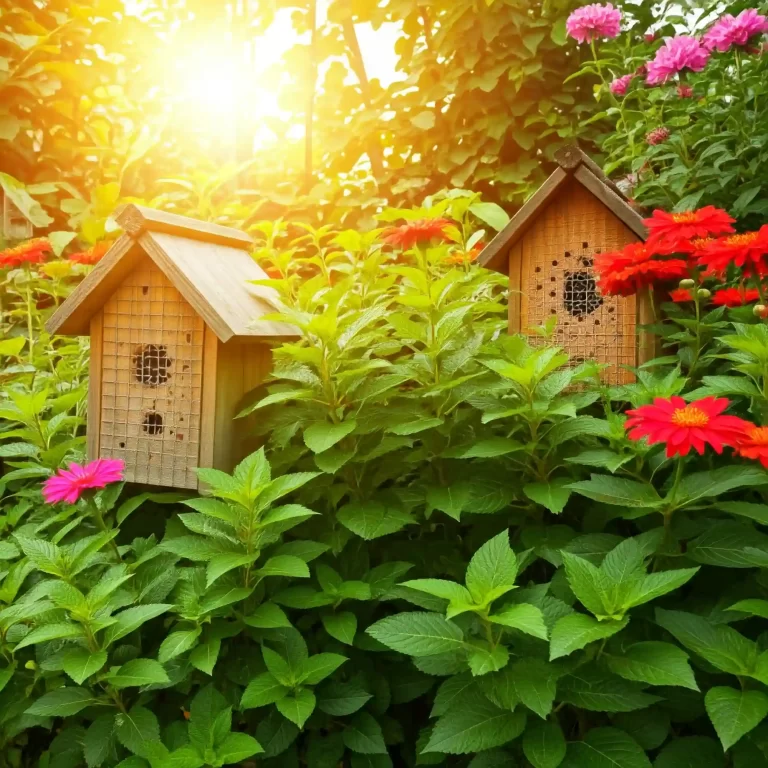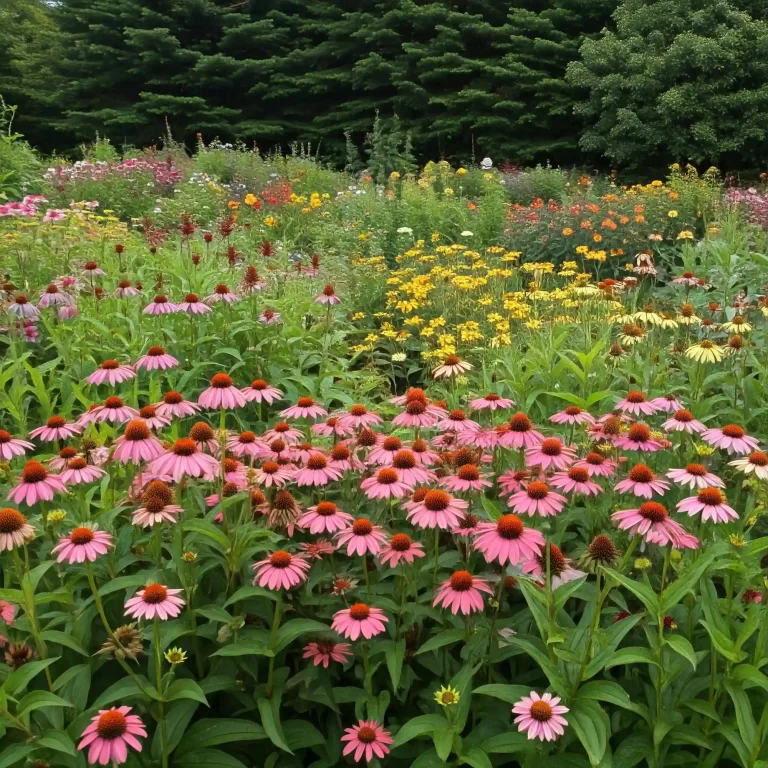Imagine a vibrant garden teeming with life. Butterflies flit amongst colorful blooms, while busy bees buzz from flower to flower, ensuring a bountiful harvest. This idyllic scene relies on a delicate balance within your garden ecosystem. But unwanted pests can disrupt this harmony, threatening both your plants and the beneficial insects that support them.
Fear not, fellow gardener! There’s a way to maintain a healthy garden without harming the pollinators vital to its success. Enter organic pest control for a pollinator-friendly garden. This approach prioritizes natural methods to manage pests, fostering a thriving ecosystem where everyone benefits.
This comprehensive guide unveils the secrets of organic pest control, empowering you to cultivate a flourishing garden sanctuary.
Understanding the Importance of Organic Pest Control
Traditional pesticides, while seemingly effective in eliminating pests, often come at a hefty cost. These chemical concoctions can indiscriminately harm beneficial insects like bees, butterflies, and ladybugs. These tiny allies play a crucial role in pollination, ensuring the reproduction of your plants and a bountiful harvest. Additionally, many pests develop resistance to traditional pesticides, rendering them ineffective in the long run.
The Benefits of Organic Pest Control:
- Protects pollinators: Organic methods target specific pests without harming beneficial insects, promoting a healthy ecosystem.
- Reduces risk of resistance: Pests are less likely to develop resistance to organic methods compared to traditional pesticides.
- Safer for humans and pets: Organic methods minimize the risk of exposure to harmful chemicals for you and your loved ones.
- Promotes a healthy garden: Organic practices encourage a balanced ecosystem, leading to healthier soil and more resilient plants.
How Organic Pest Control Protects Beneficial Insects
Organic pest control methods prioritize natural approaches that disrupt pest life cycles without harming beneficial insects. Here’s a closer look at some effective techniques:
- Handpicking: For small infestations, physically removing pests like caterpillars or beetles is a simple and effective solution.
- Insecticidal Soap: This organic spray derived from natural oils like fatty acids suffocates soft-bodied pests like aphids and whiteflies without harming beneficial insects.
- Encouraging Natural Predators: Attract ladybugs, lacewings, and other beneficial insects by planting flowers that provide them with food and shelter. These natural predators will readily feast on unwanted pests.
Common Organic Pest Control Methods
| Method | Description | Targets |
|---|---|---|
| Handpicking | Physical removal of pests | Large insects like caterpillars, beetles |
| Insecticidal Soap | Spray made from natural oils | Soft-bodied pests like aphids, whiteflies |
| Beneficial Insects | Attracting ladybugs, lacewings, etc. | Various pests depending on predator |
| Neem Oil Spray | Derived from neem tree, disrupts pest life cycle | Broad spectrum pests |
| Diatomaceous Earth | Powder made from fossilized algae, dehydrates pests | Crawling insects |
Essential Organic Pest Control Practices
Beyond specific methods, fostering a healthy garden environment discourages pests and attracts beneficial insects. Here are some crucial practices to consider:
- Plant Diversity: Create a diverse garden with a variety of plants that flower throughout the season. This provides a continuous food source for pollinators and encourages a balanced ecosystem.
- Companion Planting: Interplant beneficial herbs and flowers with your vegetables. Certain plants repel pests or attract beneficial predators, creating a natural defense system.
- Healthy Soil: Promote healthy soil by adding compost and organic matter. This fosters a thriving soil microbiome that helps suppress pest populations and creates a more resilient garden.
- Proper Watering: Watering practices play a vital role. Avoid overwatering, which can attract unwanted pests like fungus gnats.
Identifying and Managing Common Pests Organically
While organic methods prioritize prevention, sometimes dealing with specific pests becomes necessary. Here’s a glimpse at some common garden pests and organic solutions:
Table 2: Common Garden Pests and Organic Management
| Pest | Description | Organic Methods |
|---|---|---|
| Aphids | Small, soft-bodied insects that suck plant sap | Insecticidal soap spray, encouraging natural predators like ladybugs and lacewings. |
| Whiteflies | Tiny, winged insects that also suck plant sap | Similar to aphids, use insecticidal soap spray or introduce parasitic wasps that prey on whiteflies. |
| Cabbageworms | Green caterpillars that munch on leaves of cabbage and other brassica vegetables | Handpicking, spraying neem oil solution, or planting trap crops like kale to attract the pests. |
| Squash bugs | Large, sap-sucking insects that damage squash plants | Encourage beneficial insects or apply diatomaceous earth around the base of plants. |
| Cutworms | Greyish caterpillars that sever stems of young plants at the soil line | Handpicking at night or create collars from cardboard or plastic around seedlings. |
Creating a Pollinator Haven

A vibrant garden teeming with pollinators is a delight for both gardeners and nature. Here’s how to create a haven for these essential creatures:
- Select pollinator-friendly plants: Choose flowers rich in nectar and pollen, such as sunflowers, coneflowers, and lavender. Opt for native plants whenever possible, as they are best adapted to your local pollinators.
- Provide nesting sites: Offer nesting sites for bees by leaving hollow stems in your garden or building simple bee houses. Butterfly larvae require specific host plants, so research the needs of local butterfly species when selecting plants.
- Limit disturbances: Minimize using pesticides and herbicides, which can harm pollinators and disrupt the garden ecosystem. Allow some flowering weeds to grow in designated areas, as they can provide a valuable food source for pollinators.
- Water strategically: Provide shallow dishes filled with water and stones for butterflies to drink. Avoid overwatering, as this can discourage some pollinators.
Conclusion: Cultivating a Balanced Garden Ecosystem
By embracing organic pest control methods, you cultivate a healthy garden that thrives naturally. This approach safeguards the beneficial insects essential for a flourishing ecosystem, ensuring a bountiful harvest and a vibrant garden sanctuary. Remember, a healthy garden is not about achieving perfection, but about fostering balance and creating a haven for all forms of life. So, embrace the journey, enjoy the process, and watch your garden blossom into a pollinator paradise!

